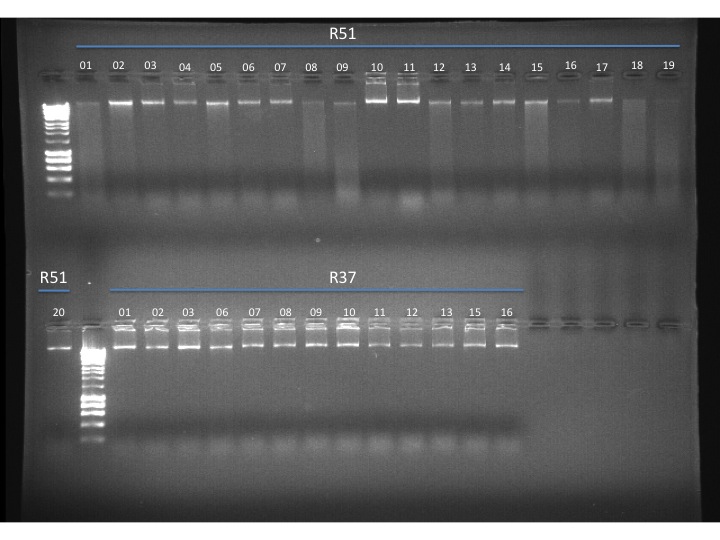Continued with gDNA isolation from yesterday’s samples. Samples were gently pipetted up and down to further dissolve remaining tissue, although tissue did not dissolve entirely. Pelleted residual tissue 10mins @ 10,000g @ RT. Transferred supe to new tubes. Precipitated DNA with 0.25mL 100% EtOH. Incubated 3mins @ RT. DNA was pelleted 5mins @ 5000g @ RT. Supe was removed, pellets were washed with 1mL 75% EtOH (x2). Supe was fully removed and the pellets were resuspended in 200uL 8mM NaOH (made by Amanda Davis 5/20/10).
1M HEPES (provided with DNAzol) was added at a 1:100 dilution to achieve a pH = 8.0. This was based on the DNAzol protocol calculations (For 1mL of 8mM NaOH, use 101uL of 0.1M HEPES = pH 8.0).
Samples were spec’d on NanoDrop 1000 on 20100607. Used a sample with 8mM NaOH and 1M HEPES to match the pH = 8.0 of the samples.
Results:
Overall DNA quality looks good (based on 260/280 ratios). Yields seem satisfactory. Will run samples on gel to verify gDNA integrity (see below).
250ng of each sample was run on a 1.2% TAE agarose gel. Gel was run on 20100607.

The results are pretty interesting.
Most of the R51 samples are pretty good looking (i.e. high molecular weight band, little smearing), but there are some samples that show a high degree of degradation (e.g. #18, #19).
All of the R37 samples look STELLAR (i.e. high molecular weight band, no smearing)!
The stark differences between the R51 samples and the R37 are intriguing. Although not currently verified (as of 20100607), I suspect that the amount of tissue stored in RNA Later possibly contributes to the long term integrity of the DNA, as nearly all of the R37 samples had very little tissue in the RNA Later. Whereas the R51 tissue samples were significantly larger in virtually every sample. I will do a visual inspection of the tubes to see if there is indeed a correlation between tissue size and apparent DNA quality.